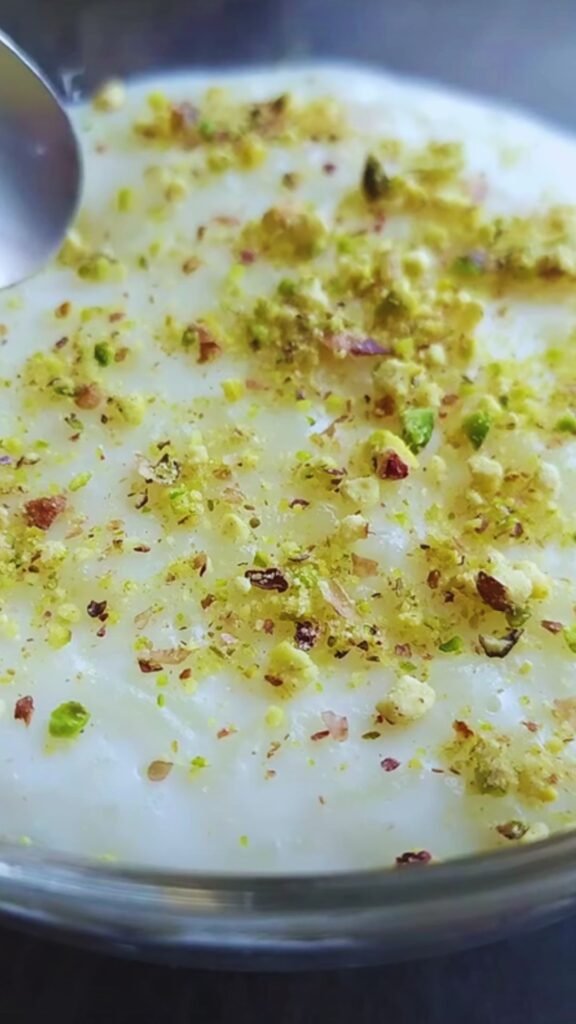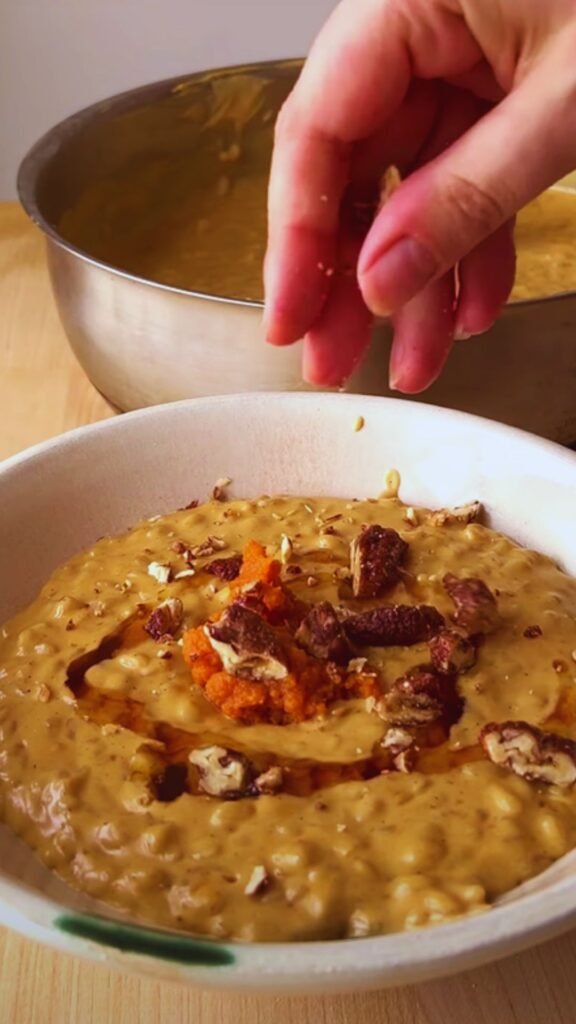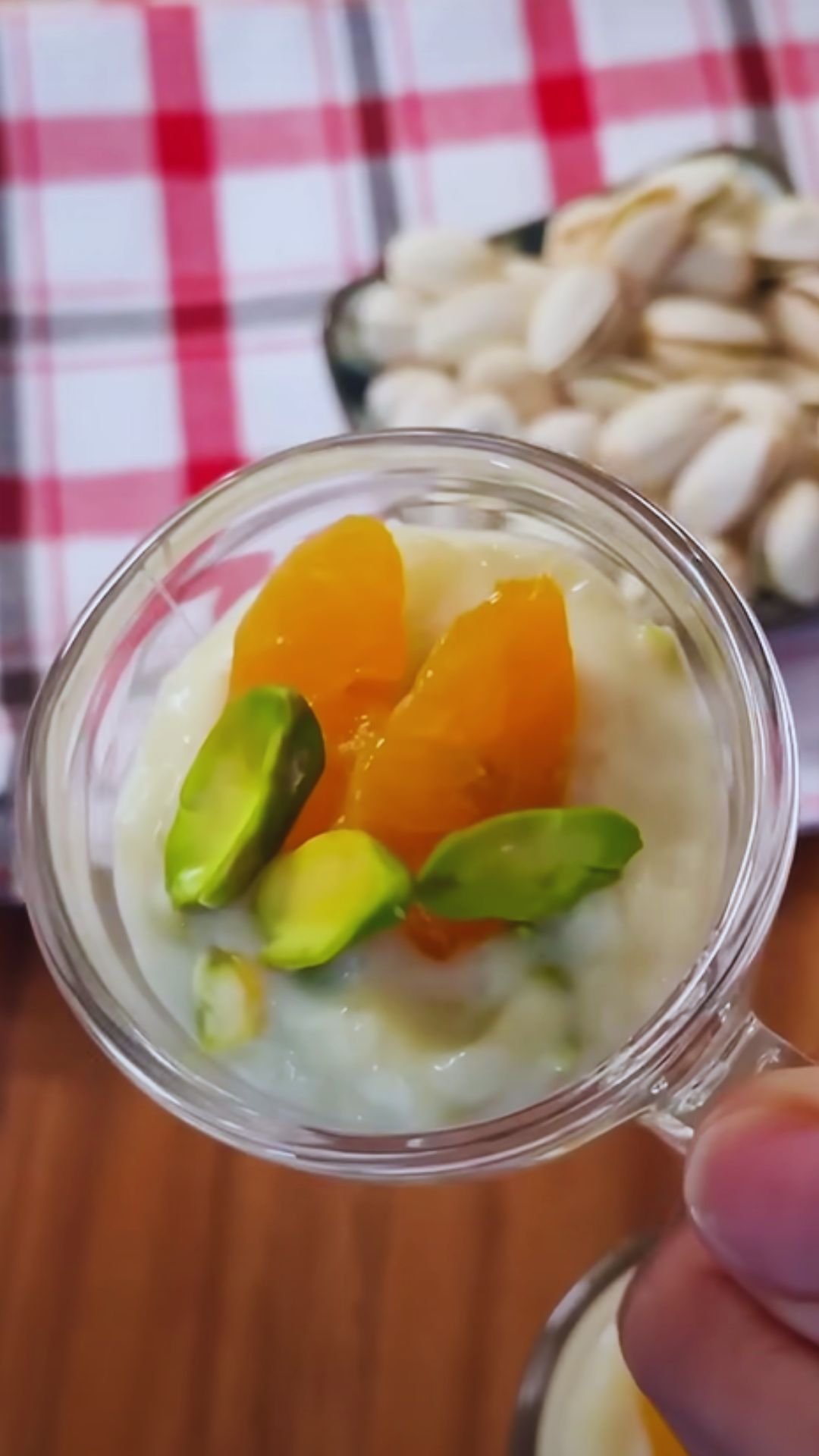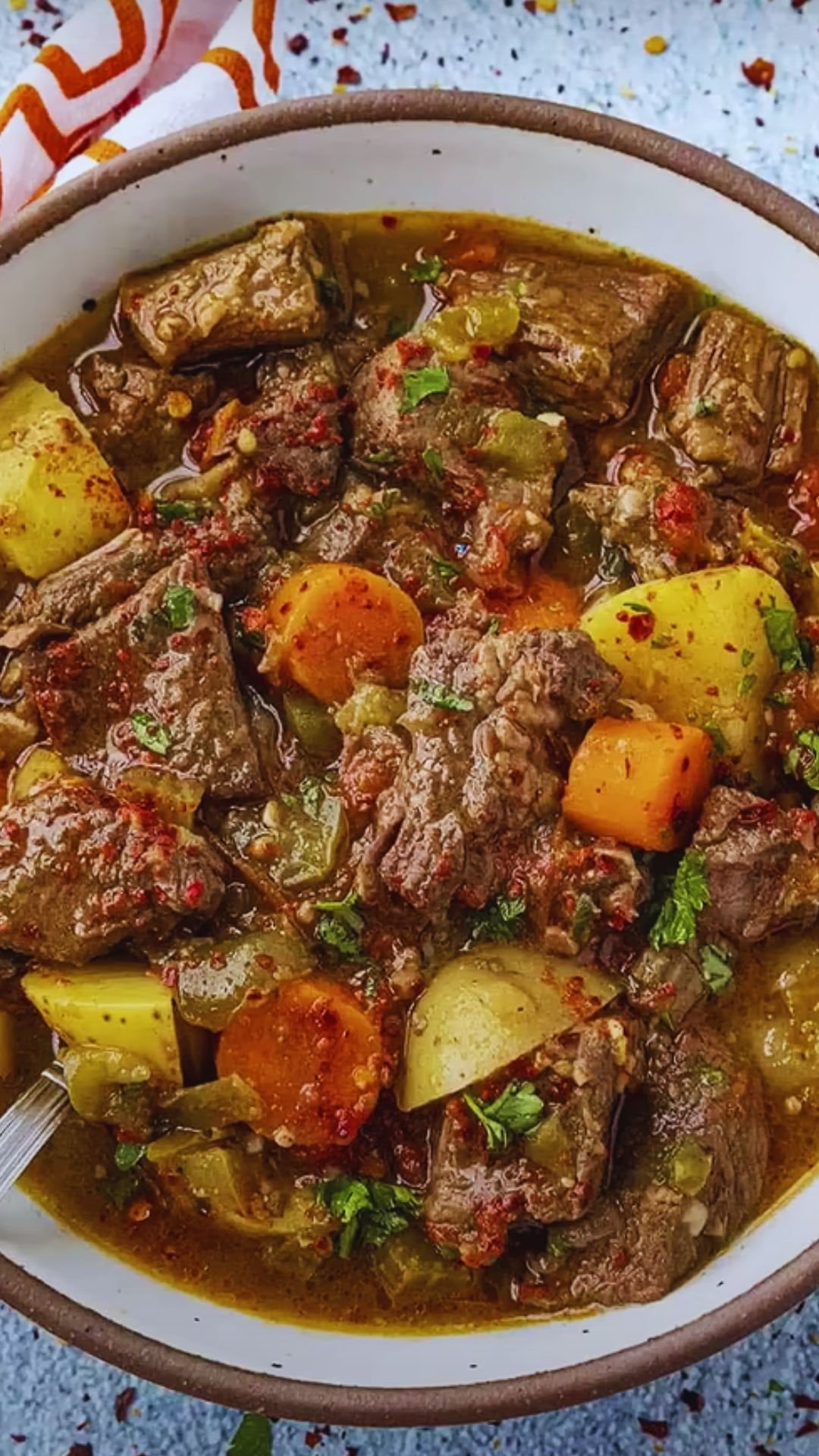There’s something utterly magical about a warm bowl of creamy rice pudding that transports me back to my grandmother’s kitchen. The gentle aroma of vanilla and cinnamon wafting through the house, promising a dessert that’s both humble and heavenly. I’ve spent years perfecting my rice pudding recipe, and today I’m excited to share everything I’ve learned about creating this classic comfort food that bridges generations.
Rice pudding is one of those deceptively simple desserts that requires just a handful of ingredients, yet achieving that perfect creamy consistency takes some know-how. Whether you’re craving a warm bowl on a chilly evening or a chilled treat during summer, this versatile dessert adapts beautifully to any season and occasion.
The Rich History of Rice Pudding
Before diving into my recipe, I think it’s worth appreciating the impressive heritage of this humble dish. Rice pudding isn’t just a dessert; it’s a cultural artifact with variations appearing across civilizations throughout history.
The origins of rice pudding date back thousands of years, with early versions appearing in ancient Persian and Roman cuisines. As rice cultivation spread, so did rice pudding recipes, each region adding its unique touch. In medieval Europe, rice pudding was considered a luxury dish due to the scarcity of rice and sugar. By the 19th century, it had become a staple comfort food across Europe and North America.
What fascinates me is how rice pudding transcends cultural boundaries. From Indian kheer flavored with cardamom and saffron to Scandinavian risgrynsgröt traditionally served at Christmas, the basic concept remains remarkably consistent: rice cooked slowly with milk and sweetened to perfection.
Understanding Rice Varieties for Perfect Pudding
The foundation of any great rice pudding begins with selecting the right rice. I’ve experimented with numerous varieties over the years, and not all rice is created equal when it comes to pudding:
- Arborio Rice: My personal favorite for an ultra-creamy texture. The high starch content creates that classic rich pudding consistency without becoming mushy.
- Short-grain White Rice: Traditional and reliable, producing a tender texture with distinct rice grains.
- Medium-grain Rice: A good middle-ground option that balances creaminess and grain integrity.
- Jasmine Rice: Adds a lovely floral aroma, though requires careful cooking to prevent mushiness.
- Basmati Rice: Creates a lighter pudding with distinct grains, perfect if you prefer a less dense dessert.
I generally avoid using brown rice for traditional pudding, as the bran layer prevents it from breaking down properly to create that silky texture we’re after. However, if you’re specifically looking for a nuttier flavor and don’t mind a chewier texture, parboiled brown rice can work with extended cooking time.
Essential Ingredients for Classic Creamy Rice Pudding

The beauty of rice pudding lies in its simplicity. Here’s what you’ll need to create my classic version that serves 6:
| Ingredient | Quantity | Notes |
|---|---|---|
| Arborio or short-grain rice | 1 cup | Unwashed to preserve starch |
| Whole milk | 4 cups | Provides richness and fat content for creaminess |
| Heavy cream | 1 cup | Creates luxurious texture |
| Granulated sugar | ½ cup | Adjust according to sweetness preference |
| Vanilla bean or extract | 1 bean or 2 tsp extract | Real vanilla makes a significant difference |
| Salt | ¼ tsp | Enhances all flavors |
| Egg yolks | 2 (optional) | For extra richness and binding |
| Cinnamon stick | 1 | For infusing during cooking |
| Unsalted butter | 2 tbsp | Adds silky mouthfeel |
| Raisins or dried fruits | ½ cup (optional) | Traditional addition for texture contrast |
The Science Behind Perfect Rice Pudding
What transforms simple ingredients into the perfect dessert is understanding the science at work. Rice pudding’s creamy texture comes from the starch in the rice grains. As rice cooks, it releases amylose and amylopectin – two types of starch that thicken the liquid.
The slow cooking process allows these starches to fully release and gelatinize, creating that characteristic creamy consistency. This is why quick-cooking methods often fall short – they don’t allow enough time for this crucial starch development.
The fat content in whole milk and cream also plays an essential role. The fat molecules coat the rice grains and create a smoother mouthfeel while preventing the pudding from becoming gluey or pasty. This is why I always insist on using full-fat dairy for authentic rice pudding – reduced-fat alternatives simply don’t achieve the same luxurious texture.
My Foolproof Rice Pudding Method
After years of testing various techniques, I’ve developed a method that consistently delivers perfect results:
- The Pre-Soak: For especially creamy pudding, I sometimes soak the rice in cold water for 30 minutes, then drain well. This hydrates the grains slightly and helps them cook more evenly.
- The Slow Start: Combine rice, milk, cream, sugar, salt, and cinnamon stick in a heavy-bottomed saucepan. Bring to a very gentle simmer over medium-low heat, stirring occasionally to prevent sticking.
- Patient Cooking: Reduce heat to low and simmer gently for 35-45 minutes, stirring every 5 minutes or so. The key here is low, slow heat – rushing creates uneven cooking and potential scorching.
- Testing Doneness: The pudding is ready when the rice is tender but still has slight resistance (not mushy) and the mixture has thickened but is slightly looser than your final desired consistency. It will continue to thicken as it cools.
- The Finishing Touch: Remove from heat and stir in vanilla and butter. If using egg yolks, temper them first by whisking a small amount of the hot pudding into them, then stirring the mixture back into the pot.
- Resting Period: Allow to cool for at least 15 minutes before serving warm, or refrigerate for chilled pudding. The resting period allows flavors to meld and texture to set perfectly.
Troubleshooting Common Rice Pudding Problems
Even with the best intentions, rice pudding can sometimes present challenges. Here are solutions to the most common issues I’ve encountered:
| Problem | Cause | Solution |
|---|---|---|
| Too thick and gluey | Overcooked rice or too much stirring | Add a splash of warm milk to loosen; reduce stirring next time |
| Too thin and watery | Undercooked or insufficient starch release | Continue cooking on low heat; next time use starchier rice |
| Rice still hard | Insufficient cooking time or heat too low | Continue cooking; ensure gentle simmer is maintained |
| Scorched bottom | Heat too high or insufficient stirring | Don’t scrape burnt bits; transfer to new pan and continue cooking more gently |
| Curdled appearance | Boiled rather than simmered | Next time maintain lower heat; try adding a tablespoon of cornstarch mixed with cold water |
| Bland flavor | Insufficient salt or vanilla | Add pinch of salt and extra vanilla; consider adding citrus zest |
Delicious Variations to Explore

While classic vanilla rice pudding is timeless, I love experimenting with different flavors. Here are some of my favorite variations:
Spiced Rice Pudding
Add 1 teaspoon of ground cinnamon, ¼ teaspoon nutmeg, ⅛ teaspoon cardamom, and a pinch of cloves to the cooking liquid for a warming spiced pudding that’s perfect for cool weather.
Coconut Rice Pudding
Replace half the milk with coconut milk and add ¼ cup toasted coconut flakes. This tropical twist pairs beautifully with fresh mango or pineapple.
Chocolate Rice Pudding
Add 4 ounces of chopped dark chocolate and an extra tablespoon of sugar after cooking. The residual heat will melt the chocolate as you stir it through.
Citrus-Infused Pudding
Add the zest of one orange or lemon during cooking, and consider stirring in a tablespoon of orange flower water at the end for a fragrant finish.
Berry Compote Topping
Top your chilled rice pudding with a simple berry compote made by simmering 2 cups of mixed berries with 3 tablespoons of sugar until syrupy.
Make-Ahead and Storage Tips
One of the things I love about rice pudding is its versatility as a make-ahead dessert:
- Refrigeration: Rice pudding keeps beautifully in the refrigerator for up to 5 days in an airtight container. It will thicken significantly when chilled; simply stir in a splash of milk before serving to restore creamy consistency.
- Freezing: While not ideal, you can freeze rice pudding for up to 2 months. Thaw overnight in the refrigerator, then reheat gently with added milk to revive the texture.
- Reheating: To reheat cold rice pudding, place your desired portion in a saucepan with a splash of milk and warm over low heat, stirring frequently. Alternatively, microwave in short bursts, stirring between each.
- Individual Portions: I often make a large batch and portion it into small ramekins for quick individual desserts throughout the week.
Perfect Serving Suggestions

Rice pudding is wonderfully versatile when it comes to serving:
- Warm Comfort: Serve warm topped with a sprinkle of ground cinnamon and a small pat of butter that melts enticingly into the pudding.
- Chilled Elegance: For a refreshing dessert, serve cold with fresh berries and a light dusting of powdered sugar.
- Breakfast Option: Rice pudding makes a delightful breakfast alternative to oatmeal. Top with sliced bananas, a drizzle of honey, and chopped nuts.
- Entertaining Flair: For dinner parties, serve in elegant glassware layered with fruit compote and topped with a tuile cookie or caramelized sugar crust.
- Family Style: For casual gatherings, present a large bowl of rice pudding alongside small bowls of various toppings like toasted nuts, dried fruits, fresh berries, honey, maple syrup, and cinnamon sugar, allowing everyone to customize their portion.
My Complete Creamy Rice Pudding Recipe
Now that I’ve shared all my insights, here’s my complete recipe that brings everything together:
Classic Creamy Rice Pudding
Serves 6
Ingredients:
- 1 cup Arborio rice
- 4 cups whole milk
- 1 cup heavy cream
- ½ cup granulated sugar
- ¼ teaspoon salt
- 1 cinnamon stick
- 1 vanilla bean, split lengthwise (or 2 teaspoons pure vanilla extract)
- 2 egg yolks (optional, for extra richness)
- 2 tablespoons unsalted butter
- ½ cup golden raisins (optional)
Method:
- If using raisins, place them in a small bowl and cover with hot water to plump while preparing the pudding.
- In a heavy-bottomed 4-quart saucepan, combine rice, milk, cream, sugar, salt, and cinnamon stick. If using a vanilla bean, scrape the seeds into the mixture and add the pod as well.
- Bring the mixture to a gentle simmer over medium heat, stirring frequently to prevent the rice from sticking to the bottom.
- Reduce heat to low and simmer very gently, partially covered, for about 35-45 minutes. Stir every 5 minutes to prevent sticking and check consistency. The rice should be tender but still have a slight bite, and the mixture should be creamy but still a bit fluid (it will thicken as it cools).
- If using egg yolks, when the rice is cooked, beat the yolks in a medium bowl. Gradually whisk in about 1 cup of the hot rice mixture to temper the eggs. Then pour the egg mixture back into the pot, stirring constantly.
- Cook for 2-3 more minutes, stirring constantly, until slightly thickened.
- Remove from heat and discard the cinnamon stick and vanilla bean pod (if used). Stir in the butter and vanilla extract (if not using bean).
- Drain the raisins if using and stir into the pudding.
- Transfer to a serving bowl or individual dishes. The pudding can be served warm, at room temperature, or chilled.
- If not serving immediately, press a piece of plastic wrap directly onto the surface of the pudding to prevent a skin from forming.
Healthier Adaptations
For those with dietary restrictions, rice pudding can be adapted in several ways:
| Dietary Need | Substitution | Expected Outcome |
|---|---|---|
| Dairy-Free | Almond milk and coconut cream | Slightly nuttier flavor, still creamy |
| Lower Fat | 2% milk and half & half (instead of cream) | Less rich but still satisfying |
| Lower Sugar | Reduce sugar to ¼ cup and add 2 tbsp honey | Complex sweetness with fewer calories |
| Vegan | Plant milk and coconut cream, no eggs | Different but delicious alternative |
| Gluten-Free | Use certified gluten-free rice | Naturally gluten-free if ingredients are certified |
While these adaptations work reasonably well, I find the traditional full-fat, dairy-based version creates the most authentic texture and flavor. However, don’t be afraid to experiment to suit your dietary needs.
Rice Pudding Around the World
What I find fascinating about rice pudding is how universal it is. Almost every culture has its own version:
- Arroz con Leche (Spain/Latin America): Flavored with cinnamon and sometimes citrus zest
- Kheer (India): Made with basmati rice, cardamom, saffron, and nuts
- Rizogalo (Greece): Often topped with a dusting of cinnamon
- Sutlijash (Balkans): Typically garnished with ground walnuts
- Risalamande (Denmark): Mixed with whipped cream and almonds, served with cherry sauce
- Muhallebi (Middle East): Often made with rice flour rather than whole grains
Exploring these international variations can be a delightful culinary journey, and I often incorporate elements from different traditions into my own recipe.
Frequently Asked Questions
Why is my rice pudding still watery after the recommended cooking time? Different rice varieties absorb liquid at different rates. Continue cooking on low heat, stirring occasionally until it reaches your desired consistency. Remember that pudding thickens significantly as it cools.
Can I use leftover cooked rice to make rice pudding? Yes! While starting with uncooked rice gives the creamiest result, you can absolutely use leftover rice. Use about 3 cups of cooked rice, reduce the milk to 3 cups, and shorten the cooking time to about 20 minutes.
Why does my rice pudding develop a skin when it cools? This is the milk proteins forming a film on the surface as they cool. Prevent this by pressing plastic wrap directly onto the surface of the warm pudding if you dislike the skin.
Can I make rice pudding in a slow cooker or Instant Pot? Absolutely! For slow cooker, combine ingredients and cook on low for 3-4 hours, stirring occasionally. For Instant Pot, use the porridge setting with natural release, though you may need to finish on Sauté mode to reach desired thickness.
Is rice pudding healthier than other desserts? While rice pudding contains nutritious ingredients like milk and rice, traditional versions are relatively high in carbohydrates and calories. However, it offers calcium, protein, and energy, making it more nutritionally valuable than many processed desserts.
Final Thoughts
For me, the perfect rice pudding is more than just a dessert – it’s a connection to culinary traditions that span centuries and continents. There’s something profoundly satisfying about transforming humble ingredients into something so comforting and delicious through patience and care.
Whether you prefer yours warm with cinnamon, chilled with fruit, or adapted to suit dietary needs, I hope this guide helps you create your ideal version of this timeless classic. Remember that the key to exceptional rice pudding isn’t just in the ingredients but in the love and patience you put into the process. Like many of life’s simple pleasures, it rewards those who take their time.
So the next time you’re craving a dessert that wraps you in comfort like a warm hug, I hope you’ll try my creamy rice pudding recipe. I’d love to hear how your rice pudding adventures turn out and what special touches you add to make it your own family tradition.


